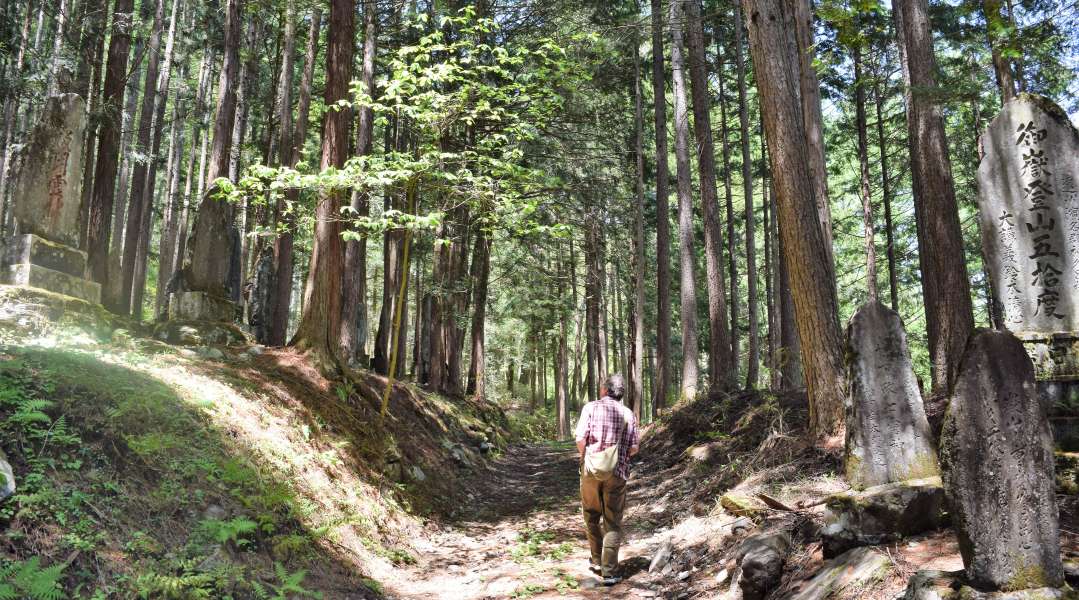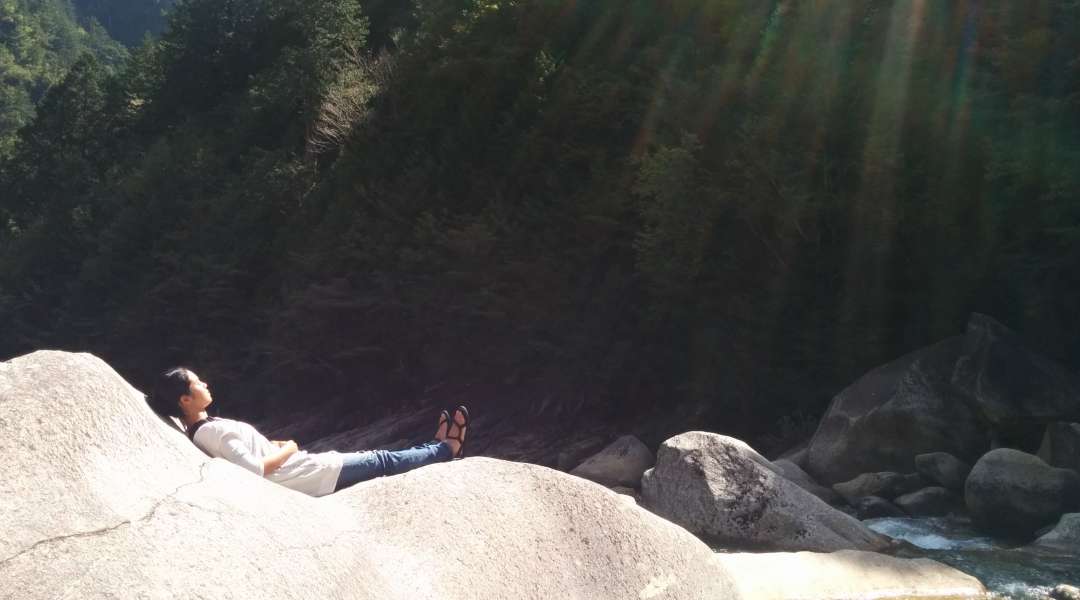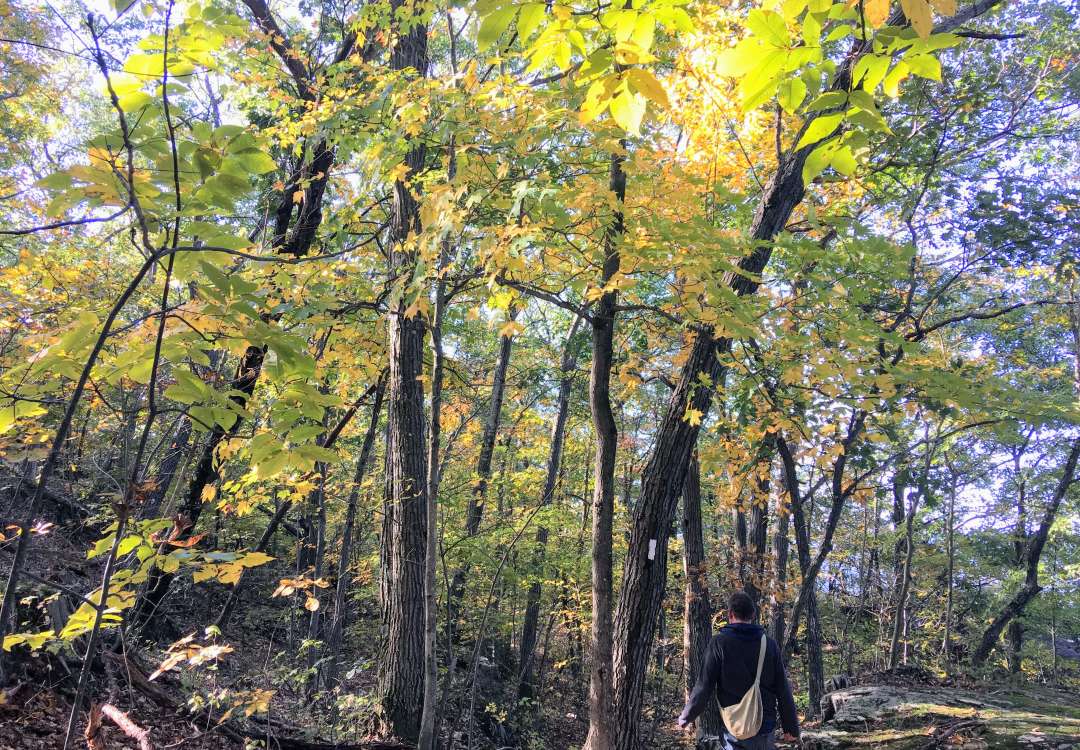
During this period of staying at home to save lives, life has changed quite drastically. Some of the daily stresses of commuting may have been temporarily resolved but shifting work patterns and the challenges of self-isolation can find us more reliant than ever on technology, with little time to step out of our routines and focus on our mental health.
By now, we’re all probably quite familiar with the one hour we have allocated to exercise and getting out of the house (as of 8th April 2020), but how can we make the most of this time set aside for essential exercise?
Meet Chris
Chris is a translator and travel writer who has been living in the Kiso Valley area of Nagano prefecture for the past 15 years, where he also works as a local guide.
Forest bathing reportedly got its start in Kiso, and Nagano now has the largest number of officially accredited forest bathing sites in Japan, so he came in contact with it early on.
He'd been involved with mindfulness practice for many years too and found that it melded perfectly with forest bathing. He started incorporating it into his English-language walking tours when visitors seemed interested and he received fantastic feedback. His wife is also a forest therapy guide and, with the increased popularity of forest bathing in the West, he hopes to welcome more visitors from abroad but, for now, we asked him to give us an intro to forest bathing and how a simplified version can be worked into our daily life here in the UK.
Why Forest Bathing?

Historically speaking, until very recently almost everyone spent lots of time immersed in the natural world. But modern life and its stresses abound, with large amounts of time spent in front of screens, daily commutes by train or by car, and a general tendency for work hours to be spent in offices in big cities or built-up areas.
Forest bathing, also known as forest therapy (or shinrinyoku, 森林浴 in Japanese), provides another option. It has nothing to do with washing in the woods, but with immersing your senses in the forest for a direct experience of the natural world. While there are various approaches, it generally involves spending languid periods of time in wooded areas soaking up the surroundings. Forest bathing is not hiking, not simply walking, and not a way of getting from point A to point B.
Shinrinyoku started as a practice in Japan in the 1980s and has become highly popular among urban Japanese for an array of mental and physical health benefits, often attributed to exposure to ‘phytoncides’ - natural substances released by plants and trees to ward off germs and predators.
Research has shown the benefits of forest bathing include stress relief, lowered blood pressure, bolstered immune system functioning, alleviation of tension and fatigue, and improvement of mood and vitality. It also provides an immediate, visceral way to reconnect with nature. A mini holiday from the daily hustle is as close as your local woodland.
At its essence, forest bathing is a simple, nature-based mindfulness practice that promotes the health of body and mind. There aren’t lots of rules to follow, but here are some approaches that may facilitate your experience.
Where
Forests and woodlands (obviously) but parks and green spaces are fine too— those with less frequented paths and lined by trees are best. Even wooded cemeteries are great. Relatively flat is ideal but gentle hills are okay.
How Long
In terms of time, normally it depends on how much you have available but half an hour to an hour is fine. Physical exercise isn't the point. If you want to get in some exercise during your outing, try doing it before or after your forest bathing session. A brisk, half-hour walk or jog followed by a half-hour of forest bathing is a good combination. In terms of distance, it needn’t be very far. The idea isn't to cover ground. In a half hour, even a quarter of a mile can be plenty.
What to Wear/Bring
Nothing special is required, but comfortable shoes and clothes you can easily move in are best. A simple beverage like water or tea will help you keep focused. A light blanket or towel is useful too in case you want to briefly sit or lie down.
The Process

Keep your devices stowed away: Preferably off, but at least keep all but essential notifications muted and the device itself in a bag or pocket.
Be anti-social: Forest bathing is often conducted in groups with a guide to facilitate but since the goal is communing with your surroundings, you can do it alone or with just a friend or two to great effect. If you forest bathe with others, be sure to keep to social distancing guidelines and focus on your personal experience.
Breathe: Deeply at the start. Feel the sensations of the breath flowing through your body. Tune in to the environment - use each of your senses in turn and orientate yourself. What do you see? What do you smell? What do you hear? You don’t necessarily need to need to verbalise this. Just spend a few moments to a few minutes centering yourself in sensory awareness.
Take it slow: You’re not trying to get anywhere. Move at a pace that’s comfortable for you; for some that means a mellow walk, for some it barely means moving at all. Feel the sensations of your footsteps on the path. As you move along, let the breath move in and out naturally. Stay to the edge of a path when needed to allow others to overtake you at a safe distance.
Stop along the way: Pause frequently to take in your surroundings. Look to the treetops, back the way you’ve came. Then go beyond the largely visual, left-brained activity of our daily lives. Listen carefully. What sounds do you hear? If there’s a stream nearby, listen to the texture of its flow. Stop and touch the beautiful boulder, the bark of that huge, old tree. Don’t think a lot about these things, just encounter them.
Stay in the moment: This is your time to slow way down and refresh yourself. Lots will come to mind—it’s natural. When you notice yourself thinking, stop walking. Just return to feeling the flow of your breath, the breeze moving over your skin, the song of the birds in the bushes.
Awareness: When you’re not trying to get anywhere, you encounter lots that generally escapes your attention. Let your awareness dwell where it pleases, on the bluebells in the morning light, the ant pulling the bit of leaf, the dappled shade on the woodland floor.
Not Just for Forests
While you do need woodland or green spaces with trees for “forest” bathing, other landscapes where nature dominates are fine for soaking the senses too. If you can access a place easily and the walking isn’t too strenuous, you can adapt a version of the process to virtually any natural setting.
Then, once you get the hang of shinrinyoku, you can incorporate it into daily life quite simply. You’ll find that even 30 seconds of focusing and feeling the sensations of breathing while listening to the breeze in the tree tops can have a fantastic and long lasting effect. Just what we need whilst we're all at home!
And if your daily slices of forest bathing are leaving you hungry for more, watch this space! Chris and his wife soon hope to launch a website all about forest bathing in the Kiso Valley, and we’ll be sure to give you the skinny once they do.
Happy bathing and remember to follow government instructions on saving the house and staying safe!
To stay up to date with all the latest happenings in Japan follow us on Facebook or Twitter.

















































